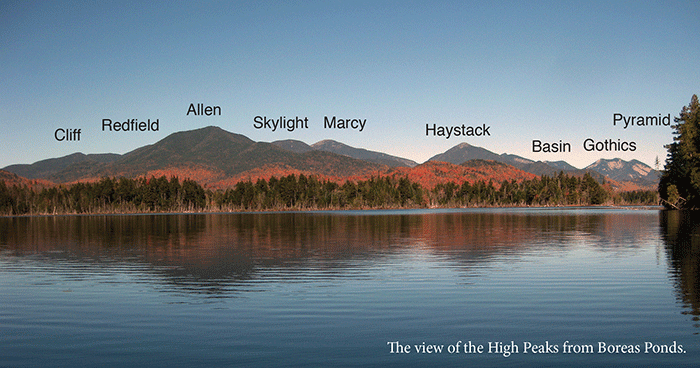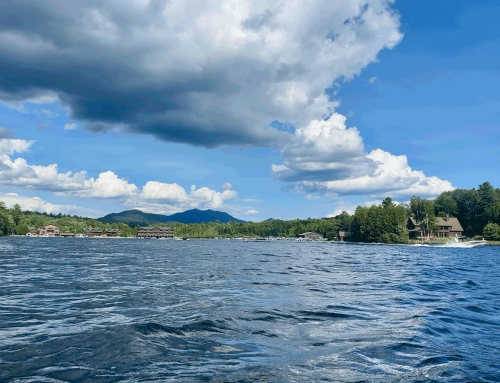The Adirondack Park Agency delays a formal classification proposal for Boreas Ponds
The Cuomo Administration is unable to develop a workable and legal classification option for the Boreas Ponds
There will no action on the classification of the Boreas Ponds at the March 9-10th meeting of the Adirondack Park Agency (APA) as had been scheduled. The APA posted its agenda and meeting materials early on Friday, March 3, 2017. The APA completed public hearings on the Boreas Ponds classification at the end of December 2016 and had planned to unveil its proposal for classification of the 22,500-acre Boreas Ponds tracts at the March meeting and take final actions in April. With this delay, it’s unclear what the new schedule will be.
“It appears that the Cuomo Administration is divided between those that are seeking extensive motorized access to the Boreas Ponds, even including ideas for temporary structures near the lakeshore, and those in that support a Wilderness classification for the shoreline area of the Boreas Ponds,” said Peter Bauer, Executive Director of Protect the Adirondacks.
The Boreas Ponds tract is part of a larger 54,000-acre classification package of Forest Preserve lands in the Adirondack Park that the APA approved in the fall of 2016. Public hearings were held across the state and more than 11,000 public comments were submitted. While most of the classification options for other Forest Preserve lands are not controversial, public attention has focused on the future management of the Boreas Ponds tracts. The Boreas Ponds is the highest elevation wetland area in New York and is a pond system surrounded by mountain peaks. “When you canoe on Boreas Ponds it feels like you’re canoeing around mountain tops. It’s one of the most beautiful vistas in New York. The purchase of the Boreas Ponds was a great accomplishment by Governor Cuomo” said Peter Bauer. Prior to purchase of these lands in 2016 by Governor Andrew Cuomo, the Boreas Ponds had been near the top of the state’s acquisition plans for decades.
Competing plans within the Cuomo Administration and Department of Environmental Conservation range from those pushing for a small Intensive Use area campground, which may even have temporary lodging facilities or some kind of a type of hut-to-hut hiking and lodging experience. The DEC appears committed to providing motorized CP3 access for qualified disabled individuals to the Boreas Ponds as well as to retaining the Boreas Ponds Dam, which under one scenario could be accomplished with a Primitive Corridor on an existing road to access the dam for maintenance. The DEC also appears committed to maintaining the “historic” cabin at the “4 Corners” intersection of the Gulf Brook Road and Boreas Road, some 6.5 miles into the tract. Others within the Cuomo Administration appear to support a Wilderness classification for entire shoreline of the Boreas Ponds as part of the High Peaks Wilderness, and support public access on part of the Gulf Brook Road, the exact distance in dispute. Whether the Gulf Brook Road would be used for a snowmobile trail or another route would be created also appears to be in dispute. The lack of a good alternative for an east-west running snowmobile trail to connect North Hudson to Newcomb, which the Governor Cuomo and the Have committed to build (even starting trail construction to the North Hudson end of the trail in 2016), other than the Gulf Brook Road appears to be a major stumbling block facing state planners.
“The APA public hearing in 2016 was for a mixture of Wilderness and Wild Forest options. The law is clear that if the Cuomo Administration moves ahead with an Intensive Use Area and campground option that this will require a new Environmental Impact Statement and new public hearings. We certainly hope they come around to sound planning and decisions and provide Wilderness protections for the Boreas Ponds and we will continue to advocate for this” said Peter Bauer.
The Cuomo Administration and DEC appear to be trying to replicate the model it used for the Essex Chain Lakes classification, lands that were purchased in 2012. In this classification the APA sought to blend together snowmobile trail corridors, motor vehicle access within a quarter mile of the Essex Chain Lakes, special motorized access for the disabled, management with motor vehicles by the DEC, public bicycle riding on roads and in Primitive areas, and motorless lakes.
“The hodge-podge of public uses that the APA approved at the Essex Chain Lakes area was designed to provide a variety of public use options with the purpose of attracting high numbers of people to the Essex Chain Lakes. Unfortunately, this approach backfired and overall public use has been low because the public does not know what it’s going to find when it gets there. Those that work to carry their canoe into the Essex Chain may find a DEC staffer in a truck, people bike riding through the area, and others who drove motor vehicles to the heart of the Essex Chain. We certainly hope that the mistakes made with the Essex Chain Lakes classification are not replicated with the classification of the Boreas Ponds,” said Peter Bauer.
Once the Cuomo Administration makes a final decision the APA will release it as an official proposal and make the final approvals.







